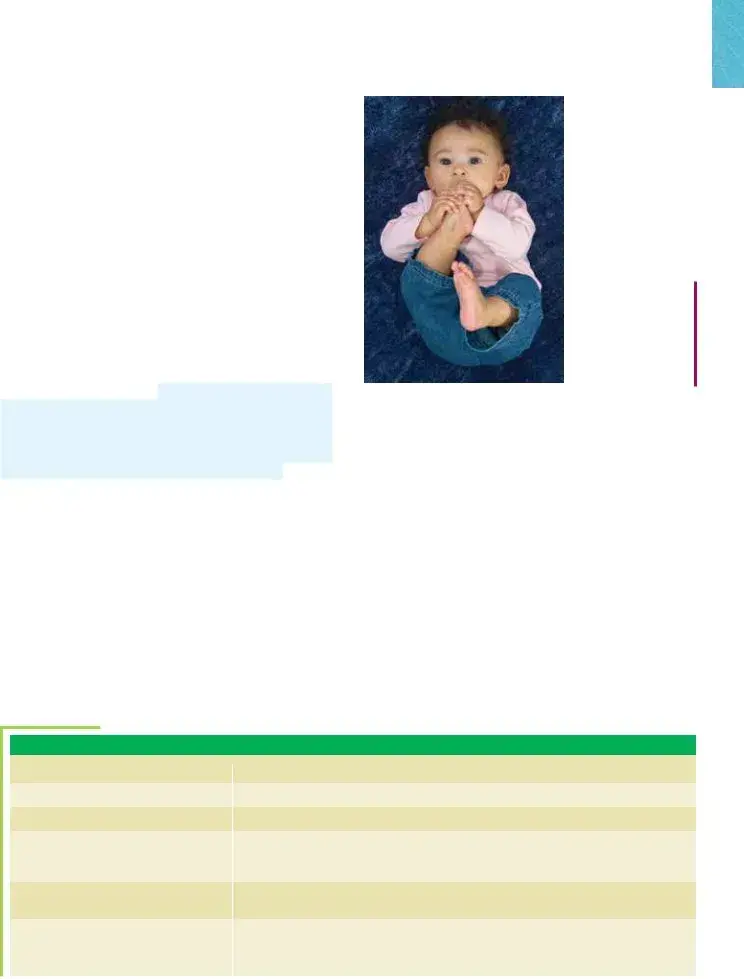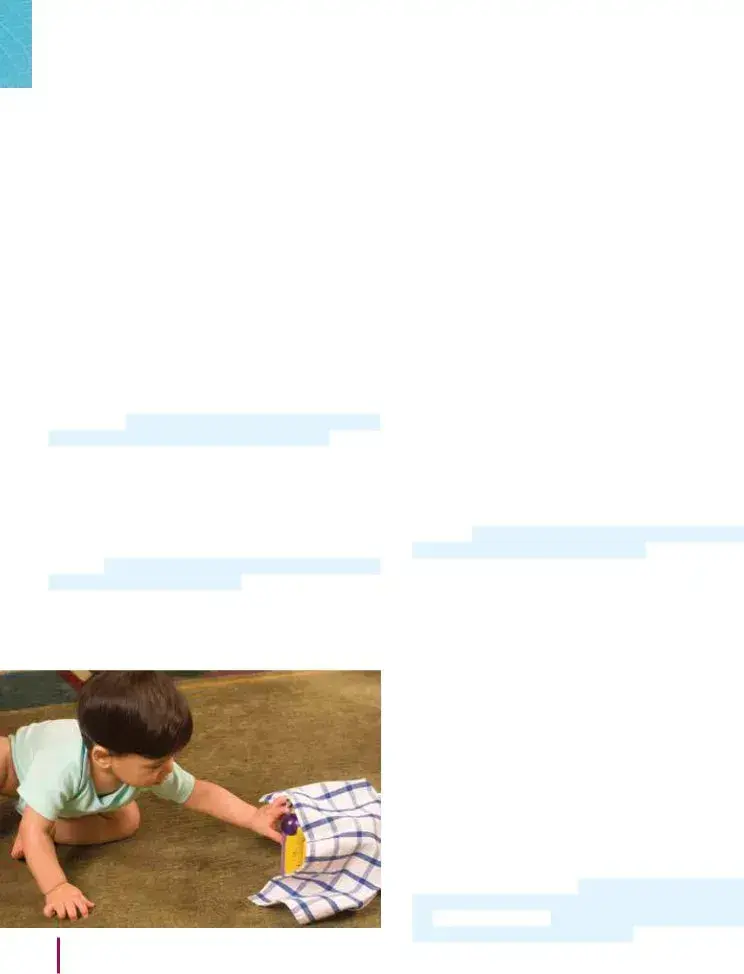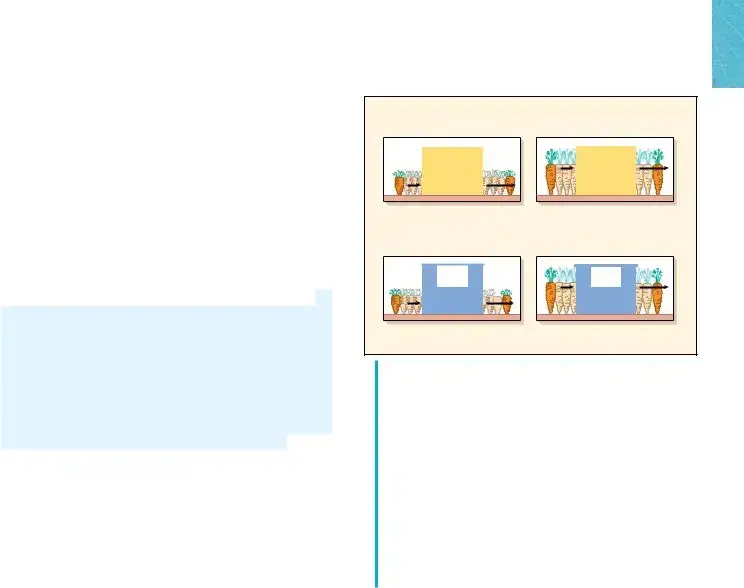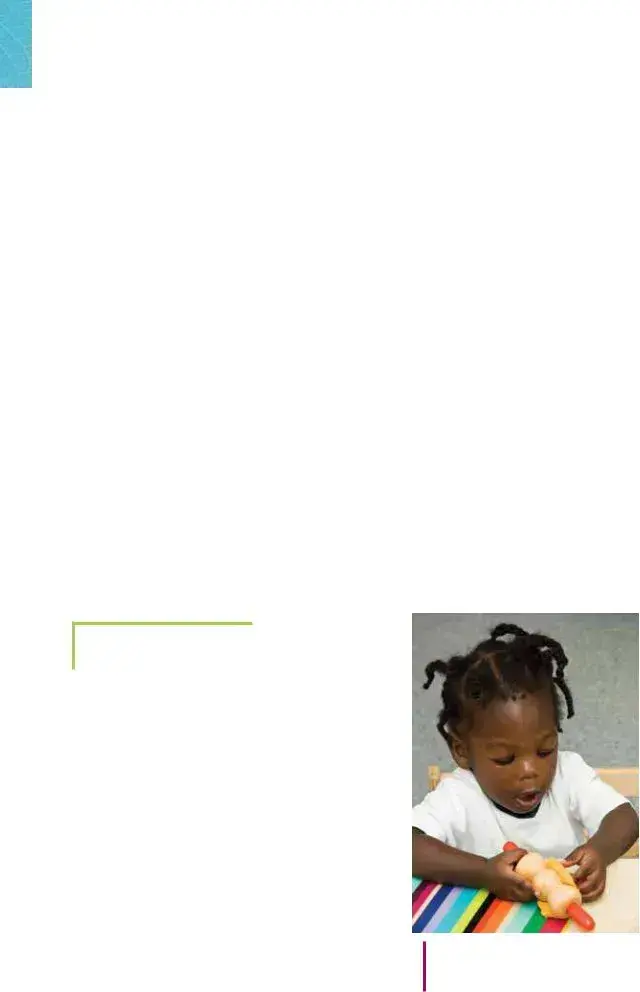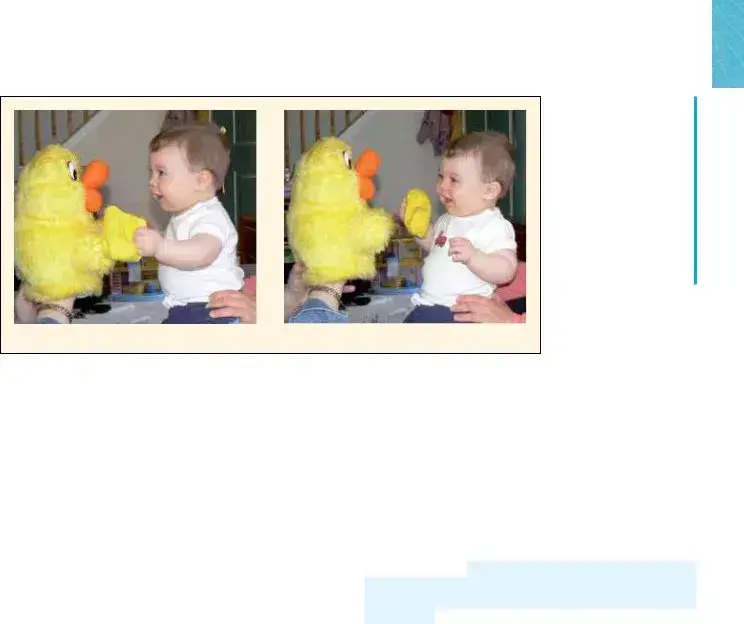|
Rather, they touch, rub, and pat a color photo of an object, |
within Piaget’s time frame. Yet other capacities—including sec |
|
or pick it up and manipulate it. These behaviors, which reveal |
ondary circular reactions, understanding of object properties, |
|
confusion about the picture’s true nature, decline after 9 months, |
first signs of object permanence, deferred imitation, problem |
|
becoming rare around 18 months (DeLoache et al., 1988; |
solving by analogy, and displaced reference of words—emerge |
|
DeLoache & Ganea, 2009). |
earlier than Piaget expected. These findings show that the |
|
As long as pictures strongly resemble real objects, by the |
cognitive attainments of infancy do not develop together in the |
|
middle of the second year toddlers treat them symbolically. After |
neat, stepwise fashion that Piaget assumed. |
|
hearing a novel label (“blicket”) applied to a color photo of an |
Recent research raises questions about Piaget’s view of how |
|
unfamiliar object, most 15‐ to 24‐month‐olds—when presented |
infant development takes place. Consistent with Piaget’s ideas, |
|
with both the real object and its picture and asked to indicate |
sensorimotor action helps infants construct some forms of |
|
the “blicket”—gave a symbolic response. They selected either |
knowledge. For example, in Chapter 4, we saw that crawling |
|
the real object or both the object and its picture, not the picture |
enhances depth perception and ability to find hidden objects, |
|
alone (Ganea et al., 2009). Around this time, toddlers increas |
and handling objects fosters awareness of object properties. Yet |
|
ingly use pictures as vehicles for communicating with others and |
we have also seen that infants comprehend a great deal before |
|
acquiring new knowledge (Ganea, Bloom Pickard, & DeLoache, |
they are capable of the motor behaviors that Piaget assumed led |
|
2008). They point to, name, and talk about pictures, and they can |
to those understandings. How can we account for babies’ amaz |
|
apply something learned from a book with realistic‐looking |
ing cognitive accomplishments? |
|
pictures to real objects, and vice versa. |
|
|
But even after coming to appreciate the symbolic nature |
Alternative Explanations. Unlike Piaget, who thought |
|
of pictures, young children have difficulty grasping the distinc |
young babies constructed all mental representations out of |
|
tion between some pictures (such as line drawings) and their |
sensorimotor activity, most researchers now believe that |
|
referents, as we will see in Chapter 8. How do infants and tod |
infants have some built‐in cognitive equipment for making |
|
dlers interpret another ever‐present, pictorial medium—video? |
sense of experience. But intense disagreement exists over the |
|
Turn to the Social Issues: Education box on the following page |
extent of this initial understanding. As we have seen, much |
|
to find out. |
|
evidence on young infants’ cognition rests on the violation‐of‐ |
|
|
|
expectation method. Researchers who lack confidence in this |
|
evaluation of the Sensorimotor Stage |
method argue that babies’ cognitive starting point is limited |
|
(Campos et al., 2008; Cohen, 2010; Cohen & Cashon, 2006; |
|
|
|
|
Table 5.2 summarizes the remarkable cognitive attainments |
Kagan, 2008). For example, some believe that newborns begin |
|
we have just considered. Take a MoMenT… Compare this |
life with a set of biases for attending to certain information and |
|
table with Piaget’s description of the sensorimotor substages in |
with general‐purpose learning procedures—such as powerful |
|
Table 5.1 on page 153. You will see that infants anticipate events, |
techniques for analyzing complex perceptual information. |
|
actively search for hidden objects, master the A–B object search, |
Together, these capacities enable infants to construct a wide |
|
flexibly vary their sensorimotor schemes, engage in make‐ |
variety of schemes (Bahrick, 2010; Huttenlocher, 2002; Quinn, |
|
believe play, and treat pictures and video images symbolically |
2008; Rakison, 2010). |
|
TAblE 5.2 |
Some Cognitive Attainments of Infancy and Toddlerhood |
|
|
|
Age |
CognITIve ATTAInmenTS |
|
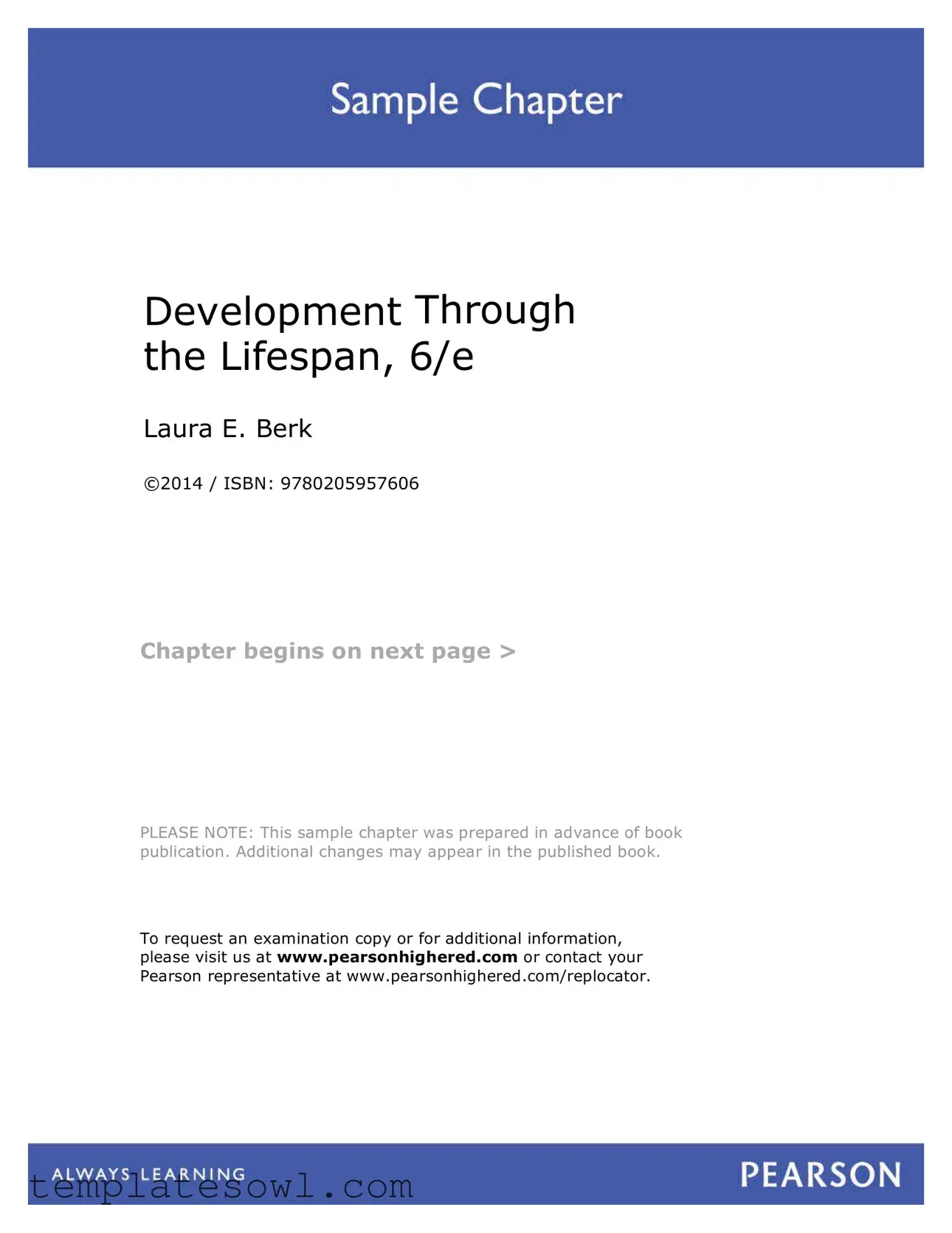

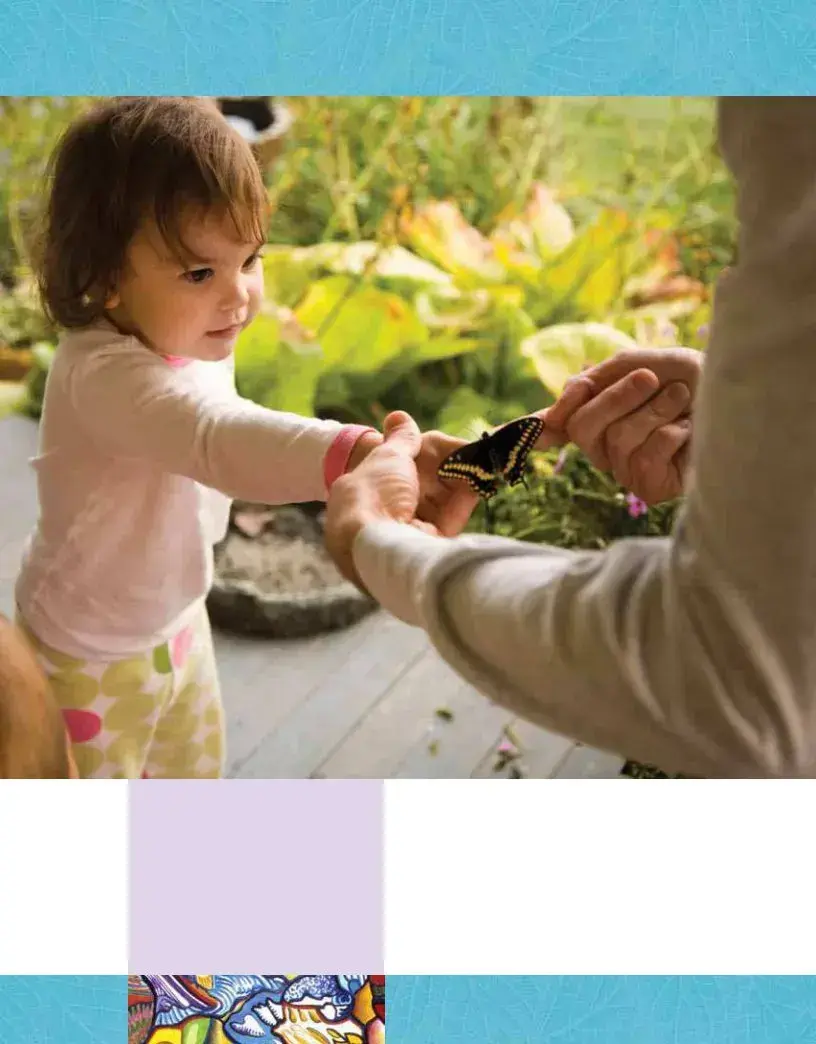
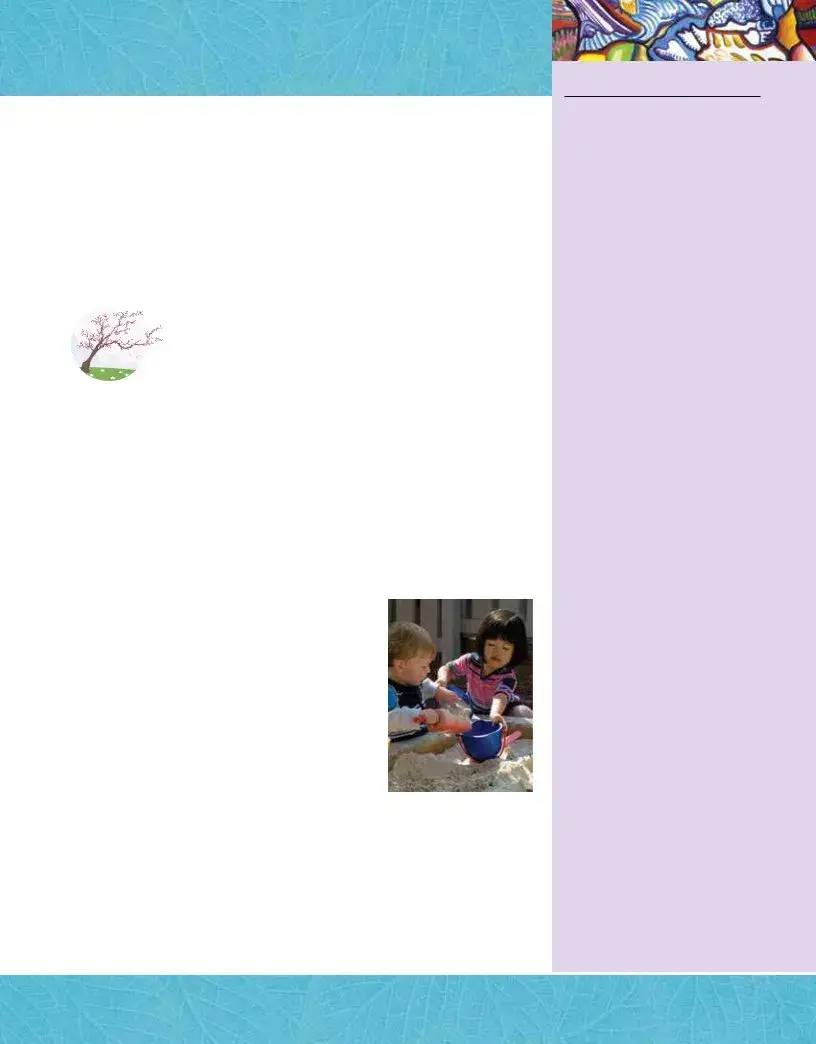
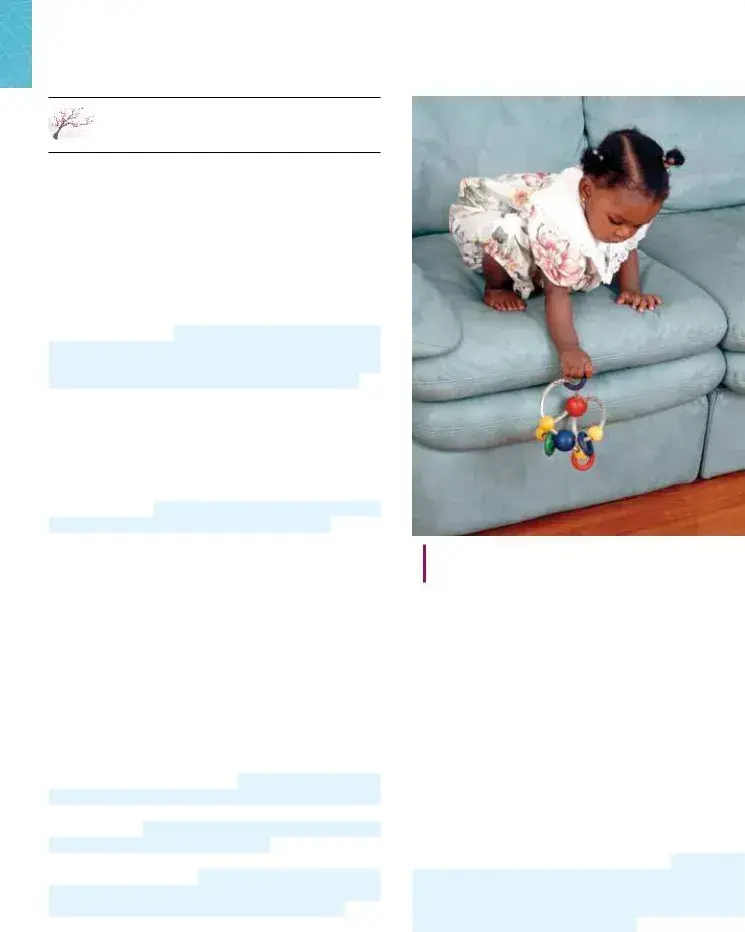

 Piaget’s Cognitive‐
Piaget’s Cognitive‐  Developmental Theory
Developmental Theory